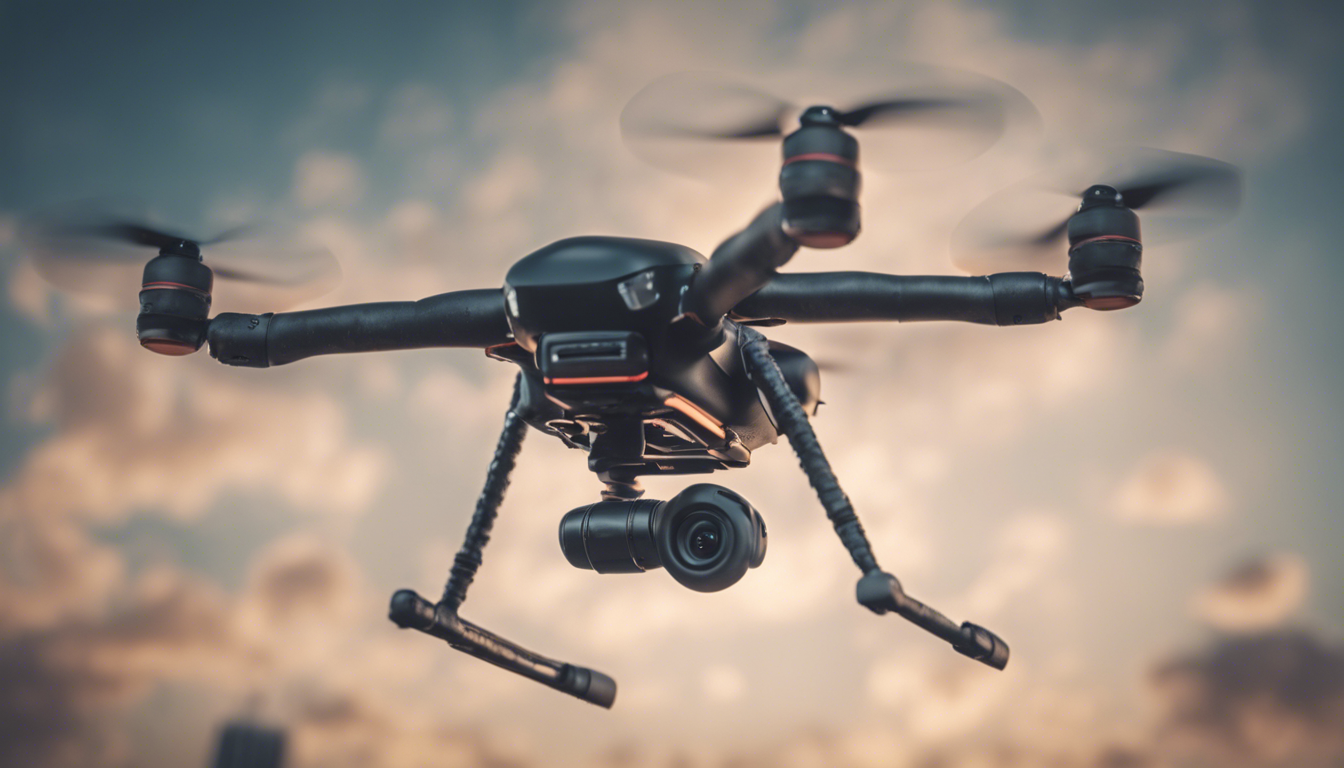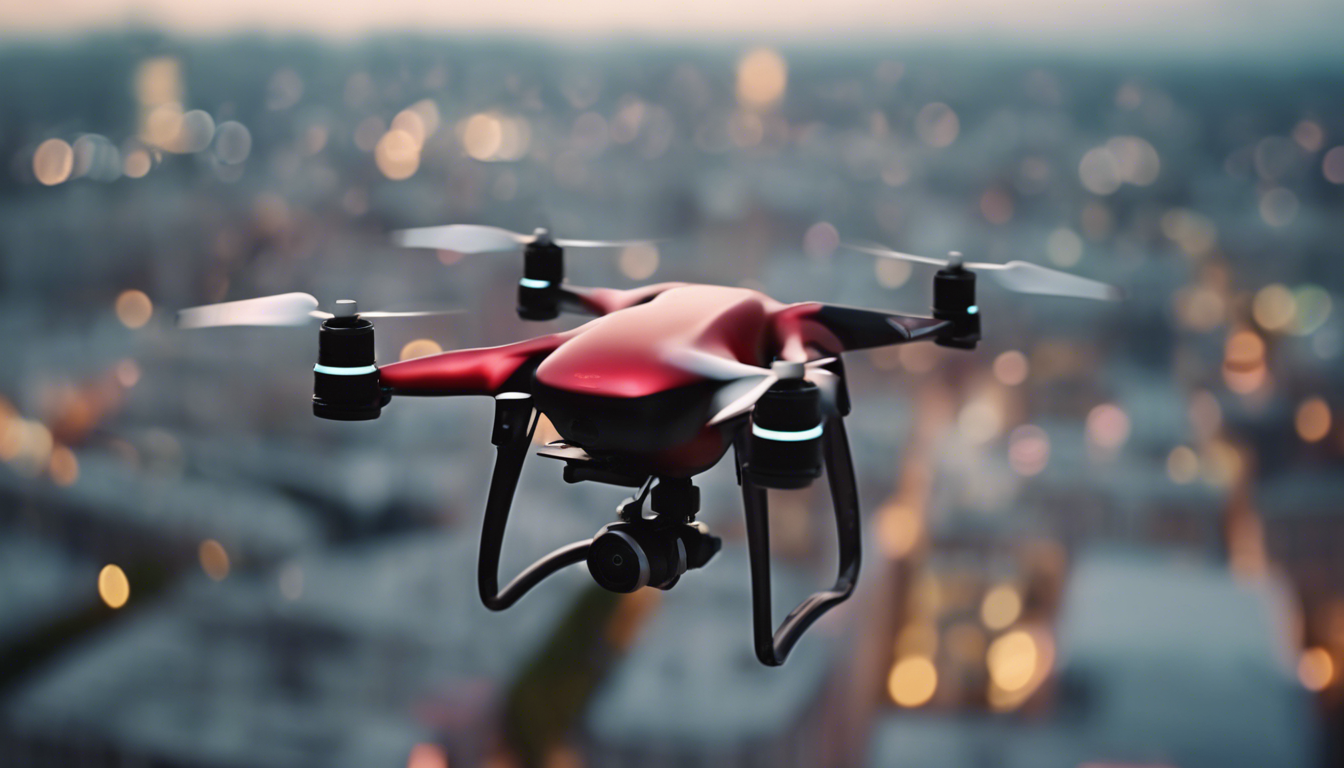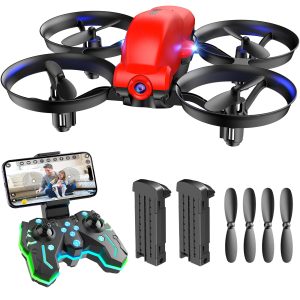
Challenges of drone operation in harsh weather
Imagine sending your drone up into a sky this is painted with menacing clouds, ready to hurl down a tempest of nature’s unpredictabilities. It’s a scenario that would set most pilot’s hearts racing. The challenges of flying drones in harsh weather conditions are real and a high number of. In these conditions, the very elements that captivate landscape photographers can turn into formidable foes for drone enthusiasts.
First up, wind is a significant challenge; it can range from a gentle breeze that merely nudges your drone off course to gusts that can sweep it away entirely. Consumer drones, though agile, can struggle to stabilize in the unpredictable airflow of a windy day. And we’re not just talking about the occasional gust; sustained high winds are the arch-nemesis of a smooth flight plan.
Then there’s rain, which is a nemesis to the unsealed motors and electronics that are the heartbeat of most hobbyist drones. Water can short circuit the system, leading to immediate power loss and potentially sending your drone plummeting to an untimely end. Despite advancements in waterproofing technologies, many consumer-grade drones still lack comprehensive protection against the elements.
Cold weather presents another set of challenges that often go unnoticed until it is too late. Battery performance drops significantly in low temperatures, which can result in reduced flight times. More than that, the battery might give out entirely mid-flight, which is as good as strapping lead weights to your drone’s legs—down it goes.
Now, on the flip side, excessive heat can cause overheating in the motors and battery, threatening the drone’s structural integrity and electronics. For those flying in desert climates, the heat can warp plastic components and interrupt signal transmission, wreaking havoc on the control and responsiveness of the drone.
And let’s not forget visibility. Fog, snow, and rain can impair both the camera’s line of sight and the pilot’s visual contact with their drone. Every seasoned drone pilot knows the heart-dropping feeling of losing sight of their craft, and inclement weather increases this risk tenfold. Without visual contact, even seasoned pilots could easily lose control, leading to crashes or fly-aways.
Finally, have you ever thought about the microscopic assailants that harsh weather can bring? Fine particles like sand, dust, or salty sea spray can infiltrate the nooks and crannies of your drone, leading to abrasion, corrosion, and long-term damage. So, even if your drone landings are spot-on, it’s the unseen damage that can cut its life short.
In essence, flying a drone in adverse conditions isn’t for the faint-hearted. The forces of nature can, and often do, conspire to make flight difficult, risky, and sometimes downright impossible. It is a cocktail of high winds, wet spells, extreme temperatures, and low visibility—shaken, not stirred—with the potential to turn any leisurely flight into a stress test for both drone and pilot.
Technological advancements in drone resilience
Fortunately, the world of drone technology is advancing at a breakneck speed, and manufacturers are heeding the call of pilots who yearn to fly in less-than-ideal weather conditions. Among these technological advancements, some stand out for their ingenuity and effectiveness in enhancing drone resilience against the vengeful elements.
Materials science has contributed significantly, with newer drones boasting impressively robust frames made of composite materials. These not only offer a lightweight build but are also resistant to corrosion and heat-induced deformation. Meanwhile, sensitive components are being housed within better-protected casings that can brave both the assault of raindrops and the bite of frost.
But it is not just about hardware; software too has seen a plethora of upgrades. Advanced stabilization systems are now almost standard, with sophisticated algorithms that adjust drone movements in real-time, effectively countering wind gusts that seek to tug them off course. These systems make use of a vast array of sensors that allow the drone to “feel” its environment more precisely than ever before.
When it comes to dealing with precipitation, breakthroughs in hydrophobic coating technologies have empowered drone designers to apply water-repellent layers to sensitive areas. Coupled with improved gasket designs for better sealing, these coatings repel water like a duck’s feathers, meaning that drizzles and downpours needn’t ground your flying adventures.
Battery technology hasn’t been left in the cold either, literally or figuratively. Advances in lithium-polymer batteries enable them to withstand lower temperatures without a steep decline in performance. This has been a game-changer for those wanting to capture the stark beauty of a winter landscape from the sky.
But the pièce de résistance in drone tech advancements might be the thermal management systems. These are critical for maintaining optimal operating temperatures in hot environments. These systems cleverly dissipate heat to prevent overheating, ensuring that even in scorching summer skies, your drone can keep its cool.
For pilots navigating through fog or heavy precipitation, drone visibility has improved with the installation of more powerful LED light accessories. This not only assists operators in maintaining visual contact with their drone but also helps in averting in-air collisions, a boon in poor visibility.
And then there’s the front line in our battle against the smallest of adversaries: fine particle filters. Newer drone models integrate these filters to prevent damage from sand, dust, and salt, ensuring that the engines and rotors are not ground down by the abrasive forces of nature. With these defenses, drones are increasingly able to return from sandy deserts and salty beaches unscathed, ready to fly another day.
Modern drones have become feats of engineering that stubbornly defy the elements, turning the once-impossible into the utterly achievable. While challenges remain, these advancements have vastly increased the possibilities for drone enthusiasts eager to explore the skies, no matter the weather greeting them outside their door.

Strategies for safe drone navigation in inclement conditions
When faced with ominous clouds and fickle gusts, savvy drone pilots turn to a variety of strategies to keep their flights smooth and their drones in one piece. Because, as we all know, the weather won’t check your schedule before stirring up a storm. So, let’s strap in and navigate through some key tactics for taking the reins in tumultuous skies.
First off, pre-flight checks become even more essential under threatening skies. Nothing beats a good, thorough examination of your bird before sending it up into angry weather. And for the love of drones, please make sure your firmware is updated. New updates can bring improvements in stability and control that are crucial for handling less-than-perfect conditions.
Drone pilots with a knack for smooth flying also swear by setting their drones to “atti mode” (attitude mode) when necessary. This setting takes GPS out of the equation, giving you manual control over the drone’s orientation. Sure, it needs a steadier hand and an eye for detail, but it can be your ace in the hole for combating those capricious winds that seek to play tug-of-war with your flying machine.
But sometimes, fighting back isn’t your best bet. Instead, savvy pilots use the strategy of sheltered flight paths. Fly low, stay close, and use natural barriers like trees or buildings as windbreaks. This isn’t about hiding; it’s about strategizing your route to work with the wind, not against it.
Got rain on the radar? No need to ground your aerial aspirations just yet. Some pilots carry on with the help of silicone motor covers. These little hats for your drone’s motors ward off water, letting you glean a few more minutes of flight from a light drizzle. Combine that with hand-launching and hand-catching techniques to avoid water puddles, and you’ve got a recipe for damp but doable drone operations.
And when temperatures plummet, go ahead and pre-warm your batteries. Slipping a warm battery straight from your pocket into this drone can buy valuable airtime, protecting against the dreaded mid-air power plummet. A snug battery insulation sleeve can also keep the cold from biting too hard.
Visibility issues can be a real kicker, with phantom drones disappearing into the murk. To keep your eyes trained on your flying buddy, high-viz decals, or even bright LED strobes, can make your drone stand out against the gray curtain of a stormy sky. Sometimes, the solution to sophisticated tech challenges comes in the simplest packages – or in this case, the brightest.
Finally, let’s talk recovery plans. Smart pilots are always two steps ahead, setting their drone’s fail-safe settings to hover or return home on command. It’s not just about avoiding the initial calamity; it’s having a plan B that ensures your drone lives to fly another day, even when Mother Nature tries to throw it a surprise party.
Flying a drone when the weather turns sour might seem like inviting chaos, but with the right strategies, it can be more about finesse than fluke. It’s the intricate ballet of preparation, skill, and some handy tech workarounds. Pilots who are prepared to consider on their feet – or, should we say, in the air – will find that not even a squall can keep a good drone down.
Case studies: Successful drone flights during extreme events
Among the tales of drones overcoming daunting conditions, one particular case stands out—an emergency response team in the midst of a hurricane. With roads impassable and the wind thrashing like a wild animal, rescue operations were desperate to assess the situation. Enter this drone, launched into the maelstrom, equipped with cameras capable of looking through the chaos. The footage gathered was invaluable in coordinating rescue efforts, proving that even the fiercest of gales is no longer a barrier for these airborne workhorses.
In another instance, during a raging wildfire that painted the sky a menacing orange, drones were there, too. Firefighters faced with blinding smoke and unpredictable flames turned to unmanned aerial vehicles to scout fire lines and relay information back to command centers. Not only did the drones soar above the inferno, but they did so with thermal imaging technology that pierced through the smoke, marking hot spots and aiding in the herculean effort to subdue the flames.
A story of a completely different nature unfolded in the frigid expanses of the Arctic. Researchers armed with drones set out to track melting ice formations—a task both crucial and treacherous. While bitter cold and biting winds threatened to ground typical flights, drones outfitted with cold weather gear rose to the occasion. The data and imagery they returned with provided scientists with an unprecedented view of the effects of climate change in some of the most inhospitable conditions on Earth.
Yet another success was marked during an unforgiving downpour that caused widespread flooding in a coastal region. Authorities needed an eye in the sky, and drones donned their hydrophobic coatings like a badge of honor. They hovered above swollen rivers and flooded streets, relaying live feedback to emergency teams. The drone imagery led to efficient evacuations and saved countless lives—a testament to how technology can be a beacon of hope amidst natural disasters.
In the ever-shifting dunes of the vast desert, conservationists face the mammoth task of monitoring endangered wildlife. Sandstorms can erase trails as quickly as they are made, but drones have been playing a pivotal role here. They fly above the swirling sands, using high-resolution cameras to track animals across vast territories. Their endurance against the scratching sands has provided data critical to preservation efforts in extremely adverse environments.
Each one of these case studies underscores a simple yet resounding truth—the relentless spirit of innovation has empowered drones to not just challenge, but triumph over the ferocity of nature. Their successful flights through hurricanes, wildfires, arctic chills, floods, and sandstorms are a herald of a new era where the question isn’t whether drones can withstand the extremes, but rather how far into the extremes they can carry us.
Future prospects for improving drone performance in adverse conditions
As we look towards the skies of the future, the limitations for drones in adverse weather seem destined to dissolve further, yielding an exciting anticipation for what innovations are on the horizon. One promising area of development is in energy storage and power systems. Researchers are actively experimenting with fuels cells and solar arrays that could increase flight times and reduce the reliance on traditional batteries, which are notoriously temperamental in extreme temperatures.
Additionally, there’s an anticipation swirling around the concept of AI-powered autonomous drones. Machine learning algorithms that ingest weather data could potentially enable drones to make dynamic in-flight decisions, like altering course to avoid sudden weather changes or finding the optimal path through turbulent winds.
We’re also witnessing the advent of drone swarming technology, where multiple drones operate in a coordinated fashion. In harsh conditions, a swarm could share data and adjust flight parameters in real-time, based on the feedback from individual drones. This hive-mind approach could enhance stability and resilience when facing the unpredictable.
Then, picture this – drones with morphing capabilities. Imagine wings and frames that can alter their shape to better handle wind shear or to shed snow and water. Significantly influenced by biomimicry, this kind of adaptive design could ensure drones not only withstand adverse conditions but thrive within them.
Digging deeper into hardware, we could see advancements in propulsion systems that eschew exposed rotor blades for enclosed ducted fans. Such modifications could offer better performance in windy conditions and protection from debris.
Moreover, drones of the future might come equipped with more specialized sensors – ponder hygrometers, barometers, and anemometers – to further refine their flight capabilities in various weather scenarios. Sensors that can ‘smell’ the chemical composition of the atmosphere could warn of toxic fumes or volcanic ash that pose hidden dangers.
The merging of virtual reality (VR) with drone technology may also create an unprecedented piloting experience. By donning VR headsets, pilots could get a firsthand view of their drone’s surroundings, navigate through challenging environments more intuitively, and possibly even control their drones with natural head movements.
In terms of infrastructure, we might see the development of smart, weather-resistant ‘droneports’ where UAVs can take refuge during flights when the weather turns particularly nasty or recharge in the relative safety from the elements.
An equally thrilling technological vision is the integration of cutting-edge materials like nanocomposites or smart textiles that could self-repair or change properties on the fly – becoming more rigid or flexible as needed for flight stability.
Lastly, as drone technology becomes increasingly integral to various sectors, we could witness a surge in industry-specific drones. These wouldn’t just tolerate bad weather; they’d be designed specifically to excel in it, such as agricultural drones that operate in the heavy mists of early mornings or search and rescue drones optimized for cold mountainous terrains.
Drones that once cautiously peeked out from the comfort of the garage during a drizzle will evolve into all-weather companions undeterred by the howls and heaves of Mother Nature. The journey drones have taken from fragile fliers to resilient explorers is already impressive. And as we boldly chart the course of drone innovations, we sail towards a not-so-distant future where drones will soar above, through, and alongside the most daunting weather, ever reliable, ever vigilant, ever resilient.
